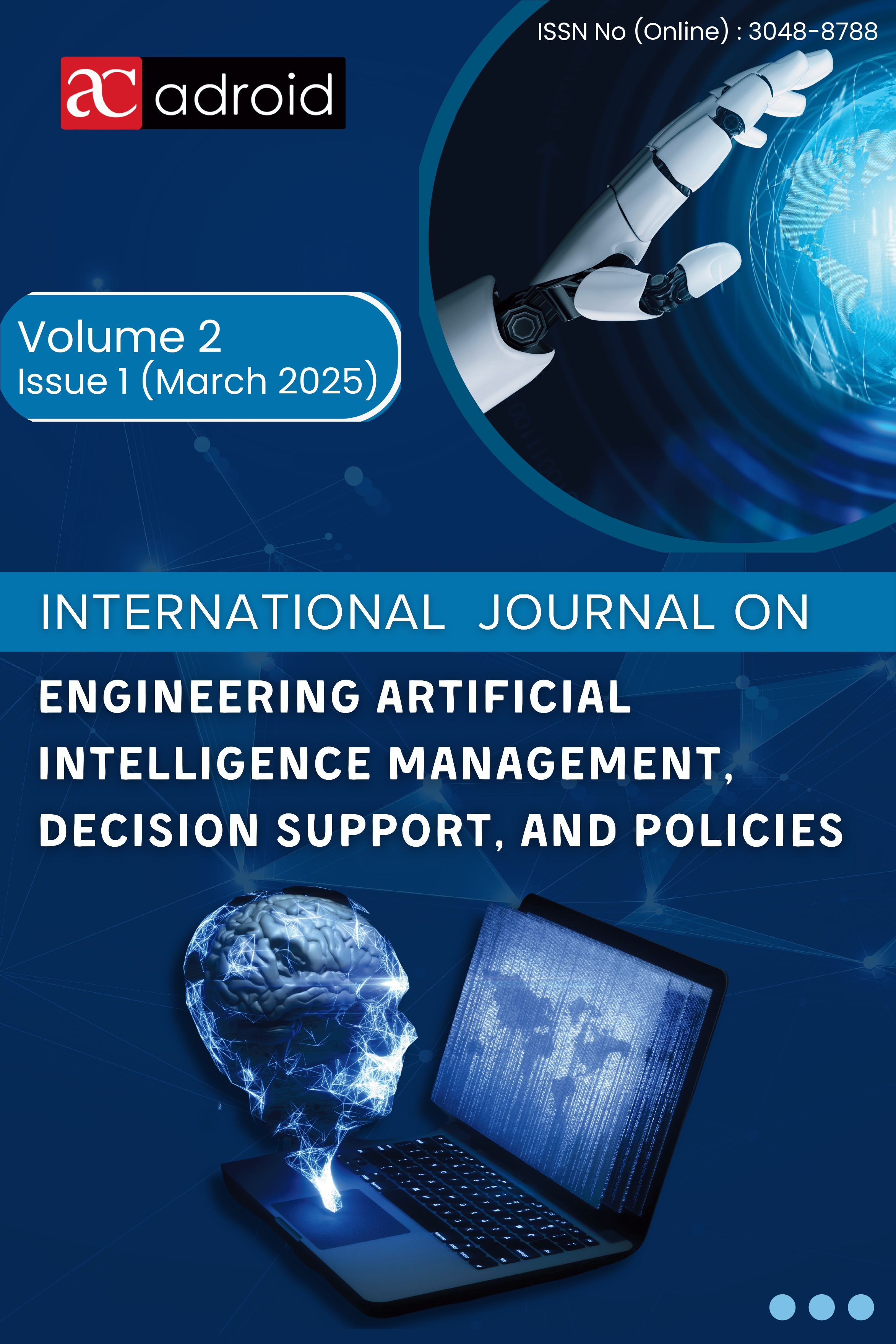BioBERT-RxReadmit: Improving Hospital Readmission Predictions Through Clinical Text Analysis with BioBERT
DOI:
https://doi.org/10.63503/j.ijaimd.2025.38Keywords:
BioBERT, Hospital Readmissions, Clinical Documentation, MIMIC-III Dataset, Predictive Modelling, Healthcare AI, Natural Language ProcessingAbstract
This study introduces BioBERT-RxReadmit, a dual stage model designed to predict hospital readmissions using unstructured clinical data from the MIMIC-III dataset. The model's name reflects its dual focus: leveraging BioBERT (Bidirectional En coder Representations from Transformers for Biomedical Texts) for analyzing medical text and Rx, symbolizing prescription and medical intervention, to ad dress readmission risks. In the first stage, BioBERT identifies key clinical features such as symptoms, diagnoses, and treatments from free-text clinical notes. These features are then integrated with the complete clinical text in the second stage, where BioBERT is fine-tuned for classification to predict 30-day readmissions. This comprehensive approach improves the model's ability to recognize complex pat terns in patient data, resulting in improved predictive accuracy. Bi oBERT-RxReadmit helps identify high-risk patients more effectively, reducing pre ventable readmissions, optimizing healthcare resources, and improving patient care, showcasing the transformative potential of advanced NLP models in healthcare.
References
[1] M. Y. Shaheen, “Applications of Artificial Intelligence (AI) in healthcare: A review,” ScienceOpen Preprints, 2021.
[2] M. Goirand, E. Austin, and R. Clay-Williams, “Implementing ethics in healthcare AI-based applications: a scoping review,” Science and Engineering Ethics, vol. 27, no. 5, pp. 61, 2021.
[3] K. Teo, C. W. Yong, J. H. Chuah, Y. C. Hum, Y. K. Tee, K. Xia, and K. W. Lai, “Current trends in readmission prediction: an overview of approaches,” Arabian Journal for Science and Engineering, vol. 48, no. 8, pp. 11117–11134, 2023.
[4] S. Wang and X. Zhu, “Predictive modeling of hospital readmission: challenges and solutions,” IEEE/ACM Transactions on Computational Biology and Bioinformatics, vol. 19, no. 5, pp. 2975–2995, 2021.
[5] Q. Le, “AI-driven Clinical Documentation Improvement for Electronic Health Records,” Journal of Artificial Intelligence Research and Applications, vol. 4, no. 1, pp. 170–181, 2024.
[6] S. A. Alowais, S. S. Alghamdi, N. Alsuhebany, T. Alqahtani, A. I. Alshaya, S. N. Almohareb, and A. M. Albekairy, “Revolutionizing healthcare: the role of artificial intelligence in clinical practice,” BMC Medical Education, vol. 23, no. 1, pp. 689, 2023.
[7] J. Devlin, M. W. Chang, K. Lee, and K. Toutanova, “BERT: Bidirectional encoder representations from transformers,” arXiv preprint arXiv:1810.04805, 2018.
[8] J. Lee, W. Yoon, S. Kim, D. Kim, S. Kim, C. H. So, and J. Kang, “BioBERT: a pre-trained biomedical language representation model for biomedical text mining,” Bioinformatics, vol. 36, no. 4, pp. 1234–1240, 2020.
[9] S. Kessler, D. Schroeder, S. Korlakov, V. Hettlich, S. Kalkhoff, S. Moazemi, and H. Aubin, “Predicting readmission to the cardiovascular intensive care unit using recurrent neural networks,” Digital Health, vol. 9, pp. 20552076221149529, 2023.
[10] N. Orangi-Fard, A. Akhbardeh, and H. Sagreiya, “Predictive model for ICU readmission based on discharge summaries using machine learning and natural language processing,” Informatics, vol. 9, no. 1, pp. 10, January 2022.
[11] M. Yu, M. Harrison, and N. Bansback, “Can prediction models for hospital readmission be improved by incorporating patient-reported outcome measures? A systematic review and narrative synthesis,” Quality of Life Research, pp. 1–13, 2024.
[12] W. Zhang, W. Cheng, K. Fujiwara, R. Evans, and C. Zhu, “Predictive modeling for hospital readmissions for patients with heart disease: An updated review from 2012–2023,” IEEE Journal of Biomedical and Health Informatics, 2024.
[13] V. B. Liu, L. Y. Sue, and Y. Wu, “Comparison of machine learning models for predicting 30-day readmission rates for patients with diabetes,” Journal of Medical Artificial Intelligence, vol. 7, 2024.
[14] S. N. Golmaei and X. Luo, “DeepNote-GNN: Predicting hospital readmission using clinical notes and patient network,” Proceedings of the 12th ACM Conference on Bioinformatics, Computational Biology, and Health Informatics, pp. 1–9, August 2021.
[15] N. B. Thapa, S. Seifollahi, and S. Taheri, “Hospital readmission prediction using clinical admission notes,” Proceedings of the 2022 Australasian Computer Science Week, pp. 193–199, 2022.
[16] N. Yin and Y. Li, “A-BBL: A Risk Prediction Model for Patient Readmission based on Electronic Medical Records,” Journal of Computing and Electronic Information Management, vol. 10, no. 3, pp. 125–131, 2023.
[17] S. Gan, C. Kim, J. Chang, D. Y. Lee, and R. W. Park, “Enhancing readmission prediction models by integrating insights from home healthcare notes: Retrospective cohort study,” International Journal of Nursing Studies, vol. 158, pp. 104850, 2024.
[18] Y. Wu, M. Jiang, J. Xu, D. Zhi, and H. Xu, “Clinical named entity recognition using deep learning models,” AMIA Annual Symposium Proceedings, vol. 2017, pp. 1812, 2017.
[19] S. Dafrallah and M. A. Akhloufi, “Hospital Re-Admission Prediction Using Named Entity Recognition and Explainable Machine Learning,” Diagnostics, vol. 14, no. 19, pp. 2151, 2024.
[20] A. E. Johnson, T. J. Pollard, L. Shen, L. W. H. Lehman, M. Feng, M. Ghassemi, and R. G. Mark, “MIMIC-III, a freely accessible critical care database,” Scientific Data, vol. 3, no. 1, pp. 1–9, 2016.

